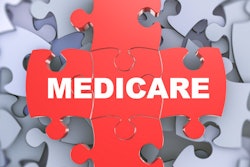
The Paycheck Protection Program (PPP) is a loan from a bank that will have to be repaid by a medical practice with interest unless all or a portion of the loan is forgiven through meeting certain requirements. Practices with PPP loans need to be proactive and put themselves in the best possible position for maximum loan forgiveness.
 Rebecca Farrington from Healthcare Administrative Partners.
Rebecca Farrington from Healthcare Administrative Partners.The window of opportunity for forgiveness closes eight weeks (56 days) from the date the funds are received. Determine this outside date first, and have it burned in the minds of accountants and bookkeepers who provide service to your practice.
There are two pieces of the forgiveness puzzle that need to be considered: costs and employment. Detailed record keeping in both areas is essential for the practice to be able to maximize the loan forgiveness amount.
Costs
During the eight-week measurement period, at least 75% of the loan proceeds eligible for forgiveness must be spent on payroll and related costs, and the remaining 25% needs to be used for other eligible nonpayroll costs. Keep in mind that costs must be incurred during the measurement period, so it is not as simple as writing a check for a particular item -- the item must be actually due to be counted. Your practice will not only need to be prepared to prove that the cost was paid but also produce an invoice showing it was due within the measurement period.
Payroll Costs (at least 75% of the forgiven amount)
Payroll costs include cash compensation as well as employer contributions to the cost of employee health insurance, retirement plans, and state and local taxes. Payroll costs during the 56-day measurement period are considered to be incurred on the date the employee's pay is earned, and they must be paid on or before the next regular payroll date. The 56-day measurement period begins on either:
- The date the PPP loan proceeds were disbursed to the practice (the Covered Period), or
- The first day of the first pay period that begins following the loan disbursement date (the Alternative Payroll Covered Period).
Consider the following when counting eligible payroll costs:
- Regular salary or wages, up to a rate of $100,000 per annum for an individual, or a maximum of $15,385 per person for the eight-week period
- Vacation, family leave, medical leave, separation pay, or any other payment owed to an employee should be paid during this period to maximize loan forgiveness. Note, however, that payments that are considered sick leave or family leave under the Families First Coronavirus Response Act (FFCRA) are not eligible for PPP loan forgiveness.
- Group health insurance premiums, including contributions to a self-insured group health plan. Watch for insurance invoice coverage dates to avoid a prepayment of premiums that might not be allowed (not incurred). You may want to ask the carrier to issue bills a bit earlier to be sure they are in the required period.
- Other group health benefits may be eligible, such as reimbursements under a Health Reimbursement Account (HRA) or employer contributions to a Health Savings Account (HSA), as well as payroll or direct reimbursements to individuals for their coverage outside the practice if such a plan is in place. Keep track of these expenses and check with your advisor when filing the Loan Forgiveness Application.
- Retirement plan contributions might not be as straightforward as other expenses. The tricky part is to determine when this cost is actually incurred. Many groups fund retirement throughout the year with a view of the total they want to have funded for the entire fiscal period, while others wait until after the end of the fiscal year to fund the majority of the retirement plan cost. The time when the contribution is actually due can depend on the provisions of the particular plan document.
- For example, the plan could have a provision under which no contribution will be paid unless the individual is employed on the last day of the year. Similarly, if people have not reached a stated 1,000 worked hours requirement then their retirement plan cost might not be considered to be incurred before the end of the eight-week measurement period. We recommend that a detailed discussion with retirement plan specialists should be undertaken as soon as possible.
- State and local payroll taxes, but not federal payroll taxes. Examples include the employer's share of state unemployment, disability, or other similar taxes. Amounts withheld from employees for these taxes, or for state income taxes, are not included.
Nonpayroll Costs (no more than 25% of the forgiven amount)
The following costs are eligible for loan forgiveness:
- Interest on a mortgage that was in place before February 15, 2020, for either real or personal property. Principal payments are not eligible for loan forgiveness. This would seem to include not only interest on a real estate mortgage but also interest on an equipment loan, provided it is secured by a lien on the equipment.
- Rent paid under a lease that was in effect before February 15, 2020, for either real or personal property. This would seem to include leases for office space as well as for business equipment.
- Utilities for which service began before February 15, 2020. Examples include electricity, gas, water, transportation, telephone, and internet access.
The guidelines specify that these nonpayroll costs must be either paid during the Covered Period or incurred during the Covered Period and paid on or before the next regular billing date.
Employment
The determination of the amount of loan forgiveness will also depend on maintaining staff and their pay level. The employment tests are dependent on actions taken up to June 30, 2020, regardless of the date of the PPP loan.
- The forgiveness amount will be reduced in proportion to any reduction in the monthly average number of full-time employees (FTE) during the 56-day measurement period as compared with a prior period. The prior period for comparison is the practice's choice between the following:
- 02/15/2019 through 06/30/2019
- 01/01/2020 through 02/29/2020
Compare now to see which period will provide the lowest FTE count.
- The negative effects of the above reduction can be eliminated if equilibrium is restored by June 30, 2020. If the practice's total FTE in the February 15, 2020, pay period is at least as high as the average FTE was during the period February 15 to April 26, 2020, then no reduction will be required provided the FTE total as of June 30, 2020 is at least as high as it was in the February 15, 2020, pay period. Bring back furloughed employees by that time. To be safe, be certain that the salary restoration and/or reemployment is reflected in at least one June 2020 payroll period.
- The forgiveness amount will be reduced dollar for dollar by the amount of reduction in salary of any individual that is more than 25% during the 56-day measurement period. The comparative time frame is the most recent quarter (January 1 to March 31, 2020). Any employee who earned over $100,000 in 2019 is excluded from this calculation. Since this calculation uses the average wage paid to the employee over the measurement period, it is important to restore wage levels to the first quarter amount as soon as possible in order to minimize the loan forgiveness reduction. Alternatively, if the employee's wage rate in the February 15, 2020, pay period is at least as high as it was during the period February 15 to April 26, 2020, then no reduction will be required provided the employee's wage rate as of June 30, 2020, is at least as high as it was in the February 15, 2020, pay period.
- If it looks like you will fail the FTE test, consider accelerating the employment of new people scheduled to start in early July, and again, they should appear in a June 2020 payroll.
Conclusion
While the Paycheck Protection Program was intended to provide a subsidy that would allow paychecks to continue even though people are not working, and also for practices to cover some other necessary expenses, it is structured as a loan. This means that any amount not spent on payroll and the other costs described above will have to be repaid to the bank. The balance of the loan that is not forgiven will accrue interest at the rate of 1% per annum, although no payments are due for six months. The loan is payable over two years, but there is no penalty for repaying it at any time within that period.
It is highly probable that practices will end up with a loan balance that is not forgiven, since the parameters used to determine the loan amount in the application process were different from those being used in the loan forgiveness calculation. For example, the application requested an estimate of 2.5 months of expenses, while the spending period is eight weeks, or only about two months. The result is that the loan received could be more than the practice can spend in the allotted time frame. The difference can either be refunded to the bank immediately or paid off over two years with interest.
With the issuance of the PPP Loan Forgiveness Application and its instructions on May 15, 2020, there are now fewer gray areas that need clarification. Practices that stay within the guidelines we have described will be well on their way to maximizing their loan forgiveness. The Loan Forgiveness Application package provides a detailed listing of the documentation the practice will be required to either submit with the application or to maintain in its files for review upon request of the Small Business Administration.
The amount of the loan that is forgiven will not be considered taxable income to the practice, and as of this writing the expenses paid with the forgiven loan will not be tax-deductible. However, consideration may be given to changing the tax deductibility aspect. Nothing in this article should be construed as legal, accounting, or tax advice, and practices should consult with their accountants, attorneys, or other advisors as necessary.
Rebecca Farrington serves as the chief revenue officer for Healthcare Administrative Partners. She has more than 20 years of experience in healthcare sales and management roles, focusing on hospital-based and physician revenue cycle management.
The comments and observations expressed are those of the author and do not necessarily reflect the opinions of AuntMinnie.com.



















